#Navajo bridge
Explore tagged Tumblr posts
Text
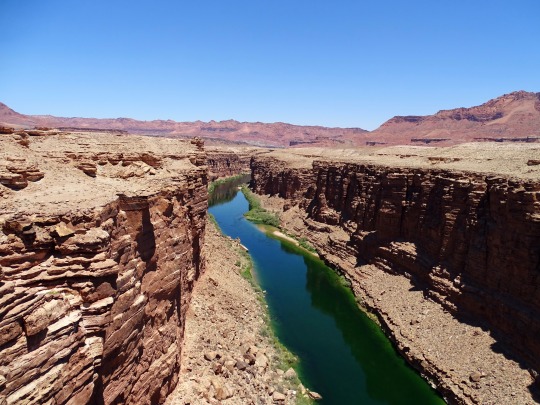
View of the Colorado River from Navajo Bridge.
Glen Canyon National Recreation Area, Arizona
June 2018
#colorado river#glen canyon#canyon#navajo bridge#travel#original photography#photographers on tumblr#photography#lensblr#wandering#national park service#national park#nature#nature photography#landscape#landscape photography#desert#desert photography#arizona#wanderingjana
264 notes
·
View notes
Text
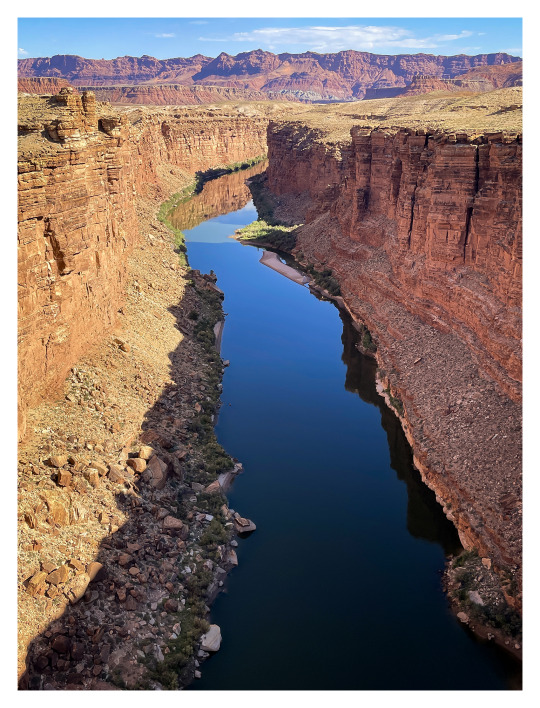
The Colorado River at Navajo Bridge.
#photographers on tumblr#landscape#riverscape#Colorado River#Navajo Bridge#Glen Canyon National Recreation Area#Navajo Nation#Coconino County#Arizona#phone photo
245 notes
·
View notes
Text

Looking up towards Lee's Ferry.
37 notes
·
View notes
Text


#Navajo bridge#Colorado River#adventure#travel#my photo#southwest#desert#mountains#utah#aesthetic#photography#landscape#scenery
126 notes
·
View notes
Text

home for the next 11 days
5 notes
·
View notes
Text

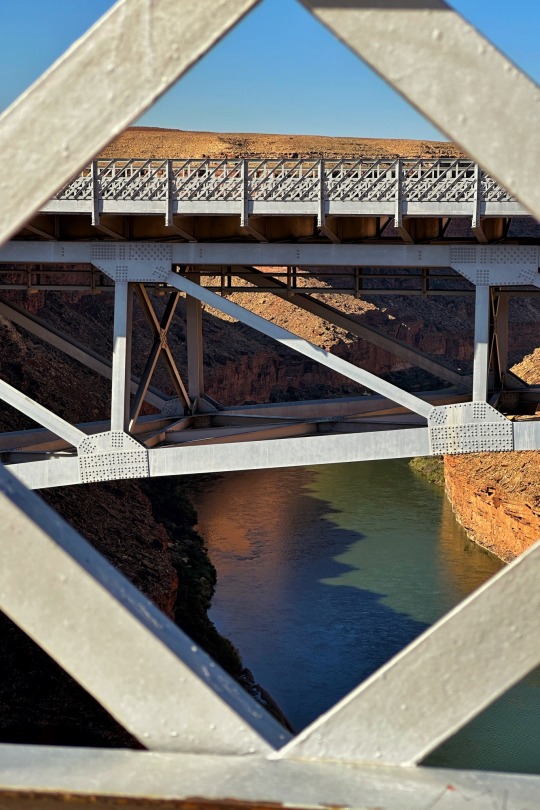








View from a bridge
#Navajo Bridge#fivesigmaphoto#the far field#photography#susan5sigma#on the streets#photographers on tumblr#color photography#desert#echo cliffs#arizona#colorado river#lee’s ferry’s#lees ferry#open spandrel#arch bridge#Navajo steel arch highway bridge#marble canyon
7 notes
·
View notes
Text
Follow Darienne Nez on xiaohongshu for more 🫶🏻
#I’m genuinely so verkelempt rn#navajo nation#navajo tribe#the great tiktok migration of 2025#the great xiaohongshu migration of 2025#tiktok#tiktok ban#i loved indigenoustok im so glad many are moving to xhs!!!#like as much as tiktok is dance trends it is also cultural education!#it has connected and bridged divides between communities that many of us never thought could coexist#if you’re gonna name tiktoks failures name its virtues too because there are many#the outpouring of love from Chinese users who see indigenous tribes posting and see family…How are you not bawling#something is healing here#tiktok is a tool and is a useful as the user wants it to be#if you want brainrot enjoy your brainrot (as everyone seems allowed to do on tumblr and reddit and insta)#but if you want content that expands your worldview it’s right at your fingertips
5 notes
·
View notes
Text







The first major solo museum presentation of fourth-generation Navajo weaver Melissa Cody (b. 1983, No Water Mesa, Arizona) spans the last decade of her practice, showcasing over 30 weavings and a major new work produced for the exhibition. Using long-established weaving techniques and incorporating new digital technologies, Cody assembles and reimagines popular patterns into sophisticated geometric overlays, incorporating atypical dyes and fibers. Her tapestries carry forward the methods of Navajo Germantown weaving, which developed out of the wool and blankets that were made in Germantown, Pennsylvania and supplied by the US government to the Navajo people during the forced expulsion from their territories in the mid-1800s. During this period, the rationed blankets were taken apart and the yarn was used to make new textiles, a practice of reclamation which became the source of the movement. While acknowledging this history and working on a traditional Navajo loom, Cody’s masterful works exercise experimental palettes and patterns that animate through reinvention, reframing traditions as cycles of evolution. Melissa Cody is a Navajo/Diné textile artist and enrolled member of the Navajo/Diné nation. Cody grew up on a Navajo Reservation in Leupp, Arizona and received a Bachelor’s degree in Studio Arts and Museum Studies from Institute of American Indian Arts, Santa Fe. Her work has been featured in The Barnes Foundation, Philadelphia (2022); Crystal Bridges Museum of American Art, Bentonville, AR (2021); National Gallery of Canada, Ottawa (2019–2020); Museum of Northern Arizona, Flagstaff (2019); SITE Santa Fe (2018–19); Ingham Chapman Gallery, University of New Mexico, Albuquerque (2018); Navajo Nation Museum, Window Rock (2018); and the Museum of Contemporary Native Arts, Institute of American Indian Arts, Santa Fe (2017–18). Cody’s works are in the collections of the Stark Museum of Art, Orange, Texas; the Minneapolis Institute of Arts; and The Autry National Center, Los Angeles. In 2020, she earned the Brandford/Elliott Award for Excellence in Fiber Art.
Melissa Cody: Webbed Skies currently on exhibition at MoMA PS1 through September 9nth, 2024
IDs Under the cut
Top to Bottom, Left to Right: White Out. 2012. 3-ply aniline dyed wool. 17 × 24″ (43.2 × 61 cm)
Deep Brain Stimulation. 2011. Wool warp, weft, selvedge cords, and aniline dyes. 40 x 30 3/4 in. (101.6 x 78.1 cm)
World Traveler. 2014. Wool warp, weft, selvedge cords, and aniline dyes. 90 x 48 7/8 in. (228.6 x 124.1 cm)
Into the Depths, She Rappels. 2023. Wool warp, weft, selvedge cords, and aniline dyes. 87 x 51 9/16 in. (221 x 131 cm)
Lightning Storm. 2012. 3-ply aniline dyed wool. 14 × 20″ (35.6 × 50.8 cm)
Pocketful of Rainbows. 2019. Wool warp, weft, selvedge cords, and aniline dyes. 19 x 10 3/4 in. (48.3 x 27.3 cm)
Path of the Snake. 2013. 3-ply aniline dyed wool. 36 × 24″ (91.4 × 61 cm)
337 notes
·
View notes
Text
Language resources
(Duolingo alternatives)
For those who no longer use or trust Duolingo, I've put together a list of resources - apps, learning methods, programmes, etc - with a list of whether or not they are free, and my personal experience with their success at teaching a language. I have also included new ones that I haven't tried yet but which I have researched; for these, I have included a rating of how much hope I have for them panning out in the future.
[I grew up bilingual & went to a multicultural school that had a student body consisting of children from refugee families who spoke little to no English. The school prioritised teaching the entire student body the minority languages, and finding a bridge language we could all learn together to fill in any gaps in communication. Due to this, I spent the last 4 years of primary school learning new languages with the rest of the student body.
We would have a school-wide lesson for 1 hour once a week - usually with a child or staff member fluent in that language leading the lesson at the front of the gym with a microphone so we could hear the correct pronunciation in time with reading the native spelling & English phonetics on the projector screen at the front of the hall. We were expected to use this language in the corridors when we spoke with teachers or staff members and when we passed by other students regardless of what their or our native languages were. As far as fluency went, we were expected to be able to recognise and say greetings and goodbyes, enquire to each others well-being, know how to ask for assistance, how to ask for medical help for various things, how to ask where the bathroom was, to give and receive directions around the entire school, as well as colours, names of things found around the school, make small talk about our activities of the day and our family, and why we were out of class - all with relative ease & mutual understanding.
We changed language after every break, so it was roughly 8 hours of lessons in each language, before we would start again with a new one.
Alongside this, the older students in the school (final 3 years, aged 9 - 11/12) would learn French 3+ hours a week for those 3 years so their writing, reading and speaking standards were acceptable for the beginning of high school. In 1 of these years, we also studied both of our native languages for the first time, for 6 weeks each.
I left traditional schooling at 11, and while I was home-schooled I taught myself Italian, Russian, and Latin from scratch, along with relearning my preferred native language, and 2 forms of sign - I used Makaton as a young child and in school as I have a form of mutism, but as a teen I realised I associated this language with the severe trauma I experienced at school, and so suffered from flashbacks and dissociative episodes when I used it. This, along with medical concerns, led to me learning BSL, and then SSE. Today, I use a combination of English, SSE and my native language in everyday settings. I have a mental block for learning French due to it being heavily associated with my trauma.
I am saying all this not for sympathy, but so that you can see firstly how much I enjoy and value learning languages, and in order to show my experience levels with learning languages. I've used, tried, and tested all of the learning methods I will be talking about in this post. I have either used or done a lot of research into the apps and programmes discussed in this post.
And yes, I have prioritised ones that teach endangered languages, indigenous languages and languages that aren't often included in language media such as Hebrew, various forms of Arabic, Navajo, Gaelic, and others. I have also included ones that teach and / or document sign languages and sign communication systems.]
Please note that the following lists are arranged in no particular order. They are not ranked best to worst or by any other X to Y ratio. They are simply ranked according to how I remembered, tested, or found each of them.
Apps
1: Fluyo.
Rating for hope / faith: ☆☆☆☆☆
Languages available: ☆☆☆
Effectiveness: n/a
Cost: unknown
Status: not yet publicly available
Please note that while Fluyo is not yet available, its Kickstarter page is flourishing, its app is in development, and the developer is a man of colour who has continued to devote himself to this app and its development despite rising health concerns, developing a life-changing disabling condition, and numerous set-backs. His YouTube channel is very educational, and he has also written a book on language-learning. If you would like to know more, you can learn about him here. Fluyo is set up like a computer game with multiple cute characters who are interactive rather than stationary, and I genuinely have high hopes for it once it is released.
2: Babble
Personal experience: ☆☆☆
Languages available: ☆☆
Effectiveness: ☆☆☆☆
Cost: free trial for the first lesson, but a paid subscription is required for any further lessons
Status: available to download
3: Language Drops
Personal experience: ☆☆
Languages available: ☆☆☆☆☆
Effectiveness: ☆☆☆
Cost: free for some lessons, but a paid account is required for access to all lessons
Status: available to download
4: Fluent forever
Hope for: ☆☆☆☆
Languages available: ☆☆☆☆
Effectiveness: ☆☆☆☆☆
Cost: free access to basic lessons to build your confidence with the language, but a paid subscription is required for unlimited access
Status: available to download
5: Lingopie
Hope for: ☆☆☆☆☆
Languages available: ☆☆
Effectiveness: ☆☆☆☆☆
Cost: free trial for 7 days, but a paid subscription is required after that for continued use of the app
Status: available to download
6: Fluenday
Hope for: ☆☆☆
Languages available: ☆☆
Effectiveness: ☆☆☆☆
Cost: free
Status: available to download
7: Language flower
Hope for: ☆
Languages available: ☆
Effectiveness: ☆☆
Cost: free, as far as I can tell
Status: available to download
8: Sign BSL / Daniel Mitchell
Personal experience: ☆☆☆☆
Languages available: ☆☆☆☆☆
Effectiveness: ☆☆☆☆
Cost: free
Status: available to download
Please note that Daniel Mitchel offers a BSL version of this, along with an ASL version.
9: Bright BSL / sign lab
Personal experience: ☆☆☆
Languages available: ☆☆☆☆☆
Effectiveness:☆☆☆☆
Cost: free for some lessons + premium for all other lessons
Status: available to download
Please note that Sign Lab offers this app for the following sign languages: BSL (Bright BSL), ASL (ASL Bloom), LSF (Pause LSF / Langue des Signes, yoDGS, Libras (LibrasLab), Italian Sign Language (MeLISegno), and Toleio: Norsk Tegnspråk.
10: BSL zone
Personal experience: ☆☆☆☆☆
Languages available: ☆☆☆
Effectiveness: ☆☆☆☆
Cost: free
Status: available to download
11: Reverso context
Personal experience: ☆☆☆
Languages available: ☆☆☆☆☆
Effectiveness: ☆☆☆☆
Cost: free
Status: available to download
This is less for learning a language, more for quick reference / fact-checking a translation.
12: Pimsleur
Personal experience: ☆☆☆☆
Languages available: ☆☆☆☆☆
Effectiveness: ☆☆☆☆
Cost: free 7 day trial, but a paid subscription is required for continued use
Status: available to download
13: Memrise
Personal experience: ☆☆☆
Languages available: ☆☆
Effectiveness: ☆☆☆☆
Cost: free for introductory levels, with a premium option to unlock majority of lessons
Status: available to download
14: Busluu
Personal experience: ☆☆☆☆☆
Effectiveness: ☆☆☆☆☆
Cost: Free, with a premium option to download lessons, more repetition, and extra lessons
Status: available to download
15: Hello Talk
Hope for: ☆☆☆
Languages available: ☆☆☆
Effectiveness: ☆☆☆
Cost: free
Status: available to download
16: Rosetta Stone
Personal experience: ☆☆☆☆
Languages available: ☆☆☆☆
Effectiveness: ☆☆☆☆☆
Cost: monthly subscription is required
Status: available to download
17: Lingo Deer
Personal experience: ☆
Languages available: ☆☆
Effectiveness: ☆☆☆☆
Cost: free, with a premium option for all lessons beyond Basics 1
Status: available to download
18: Beelinguapp
Personal experience: ☆☆☆☆☆
Languages available: ☆☆☆
Effectiveness: ☆☆☆☆☆
Cost: free trial, but a subscription is required for total access
Status: available to download
19: Lingvist
Personal experience: ☆
Languages available: ☆☆☆ (though it does have an option to suggest other languages for them to add, and which language you would like to learn from, and they'll email you when / if that language becomes available)
Effectiveness: unknown
Cost: free
Status: available to download
[Please note this one is not photosensitive friendly or seizure friendly. I had to close the app as soon as I opened it due to the design on their opening page, and even when I reopened it and clicked straight through, their colour scheme was still upsetting to my senses.]
20: Lingvano
Hope for: ☆☆☆☆☆
Languages available: ☆☆☆☆
Effectiveness: ☆☆☆☆
Cost: free for a few lessons, but for access to all lessons, a paid subscription is required
Status: available to download
21: Duocards
Personal experience: ☆☆☆
Languages available: ☆☆☆☆
Effectiveness: ☆☆☆☆
Cost: free, but a more advanced version is available for premium accounts
Status: available to download
22: Chatterbug
Hope for: ☆☆☆☆☆
Languages available: ☆
Effectiveness: ☆☆☆☆
Cost: free with limited access, but a paid version is available
Status: available to download
23: Mango languages learning
Hope for: ☆☆☆☆☆
Languages available: ☆☆☆☆☆
Effectiveness: ☆☆☆☆
Cost: free trial, with a premium account required for further access
Status: available to download
24: EdX
Hope for: ☆☆☆☆
Languages available: ☆
Effectiveness: ☆☆☆☆
Cost:
Status: available to download
Please note that EdX is an app which houses courses on multiple subjects, not specifically a language-learning app.
25: Mondly Languages
Personal experience: ☆☆☆
Languages available: ☆☆☆☆
Effectiveness: ☆☆☆
Cost: free, though it does repeatedly offer you a subscription account for an experience catered to you and your interests
Status: available to download
Please note this one may be triggering to those who are photosensitive or whose senses are upset by rapid moving gifs. There is a crown in the top right-hand corner which vibrates very quickly.
26: Speakly
Hope for: ☆☆☆☆
Languages available: ☆☆☆
Effectiveness: ☆☆☆☆
Cost: free trial, with a subscription account required for further use
Status: available to download
27: Pocket sign
Hope for: ☆☆☆
Languages available: ☆☆
Effectiveness: ☆☆☆☆
Cost: free, as far as I can tell
Status: available to download
28: Lingo legend language learning
Hope for: ☆☆☆☆☆
Languages available: ☆☆
Effectiveness: ☆☆☆☆
Cost: free, though I think there may be a premium option either available but unmentioned, or in the works
Status: available to download
Please note that this app offers you the chance to vote for which languages should be added to its interface, so they can prioritise which ones to fund.
29: INC sign language app
Hope for: ☆☆
Languages available: ☆☆
Effectiveness: ☆☆☆☆
Cost: free
Status: available to download
For those with religious trauma, please note that INC stands for Iglesia Ni Cristo, and the INC Sign Language App "is a project of the Christian Society for the Deaf under the Christian Family Organizations Office of the Iglesia Ni Cristo (Church Of Christ)". While it does not appear to prioritise religious content, the content does feature people dressed in suits as if for attending a church sermon.
30: My signing time
Hope for: ☆☆☆☆
Languages available: ☆☆
Effectiveness: ☆☆☆☆☆
Cost: 14 day free trial, and a subscription is required after this point
Status: available to download
Please note that this one is aimed at babies / toddlers & families.
32: Falou
Personal experience: ☆☆☆☆
Languages available: ☆☆☆
Effectiveness: ☆☆☆☆
Cost: free, with a premium option if you want to learn more than 1 language & unlock additional courses in your chosen language
Status: available to download
33: Earworms
Personal experience: ☆☆☆☆☆
Languages available: ☆☆☆
Effectiveness: ☆☆☆☆☆
Cost: free for the demo, then after that, the lessons are broken into two "volumes" to buy individually, or 1 bonus-pack which contains both to buy once at a slightly reduced cost.
Status: available to download
Please note that Earworms used to be available as CD lessons, which is when I first used them. The CDs were in Volumes and were more expensive than all costs on this app. I used them 10 years ago and still remember what I learned despite not getting to use the language very often, so I can guarantee their method is very effective.
34: Qlango
Personal experience: ☆☆☆☆☆
Languages available: ☆☆☆
Effectiveness: ☆☆☆☆☆
Cost: free, with a premium option for the final 3 levels
Status: available to download
Please note that this one is laid out more like a semi-immersive lesson plan rather than a game. However, it is currently my favourite one.
Other resources
1: Signing hands (YouTube)
Personal experience: ☆☆☆☆
Languages available: ☆☆
Effectiveness: ☆☆☆
Cost: free
Status: available to watch
2: Military style
Personal experience: ☆☆☆☆
Languages available: ☆☆☆☆☆
Effectiveness: ☆☆☆☆☆
Cost: n/a
Status: available to begin for free, though it will be difficult for you to find an environment that allows you to experience this authentically. If you would like to learn more about what the military style is, I will speak about it further below.
3: Textbooks / Reading materials
Personal experience: ☆☆☆☆
Languages available: ☆☆☆☆☆
Effectiveness: ☆☆☆☆
Cost: free, or otherwise up to you (what you are willing / able to spend on it)
Status: available to start whenever you feel like it
You can find numerous language-learning resources listed at the end of this post. I also recommend buying an up-to-date dictionary and thesaurus in your chosen language, and studying it. Study the grammar noted in the front, and then actually read the dictionary. It will seem strange, but it will benefit you in the long-run. Make notes as you go, highlight and colour some things in as you see fit.
Learning methods
1: Immersion
Over and over again, we are told that immersion is the best, most effective way to learn a language. This is because this is how we often think children learn languages - and we're partly right about that.
Immersion is the process of immersing yourself in the chosen language, with one single choice: learn the language, or suffer.
If our brains have to choose between struggling to pronounce a few words while gesturing to something we want and clinging onto sounds we hear like trying to hold onto a wet otter, or not getting what we want, we're going to choose to sound & look like an idiot, pointing and saying basic sounds, even if trying to remember the reply is like trying to remember Pi.
With enough time, though, we pick the language up remarkably well when we have no choice but to pick it up. This is the method which has us mimicking accents and gestures and expressions in order to best gain what we want: to express ourselves, our needs and our desires.
However, immersion is often critiqued because unless you have the means to fly to the country that speaks your desired language and live there with 0 influence from your native language for 6+ months... Well, you're not fully immersed, are you? Language apps try to give you an immersive experience, but you can always put your phone down. Depending on where you were educated, you may have had an immersive language class, where you had to learn the language or not be able to join in and so failed by default.
Good ways to mimic immersion are: finding radio channels in your chosen language and watching TV shows in your chosen language without subtitles, and listening to music in your chosen language.
2: Flashcards
Flashcards often tend to be a popular way to test your memory and retention of a particular subject. However, using them to begin learning a language can lead to a loss of motivation.
If you are creating the flashcards yourself, I would recommend creating them in 2 sets: 1 which is the traditional flashcard (your first language OR a picture on one side, and the translation on the other side), and 1 which has twice as many, with only 1 side being used. This second set should be designed like playing cards - the word or picture on one side, and a plain back.
This second set can be used when you're wanting to boost your motivation or confidence - arrange the cards face down, and begin playing the children's game of Pairs. Another option would be Snap.
When you return to using the traditional flashcards, you'll have a better foundation to build on if you've taught yourself to see these as fun, and taught your brain to associate these cards with quickfire responses - such as are brought to the surface during childrens' cards games.
3: Stickers
This is a method which seems obvious once it's pointed out, but seems confusing if you've never done it before.
Simply put, using stickers is when you create or buy stickers with the translation of everyday objects, words and phrases in your chosen language, and put them up around your house. "Door" goes on the door. "Cupboard" goes on the outside of a cupboard, "bread" goes on the inside. "Fridge" goes on the fridge door. "Milk" goes behind the milk so you see it every time you pick the milk up. "Lightswitch" goes above / under the lightswitch. Etc etc etc.
This is a memory retention technique used for multiple scenarios. Nurseries and schools may sometimes have the Makaton sign for something shown in a large diagram stuck to the walls / surfaces. Carehomes may have the names & purposes of objects stuck to the surfaces / objects in the dominant language, for the residents with memory issues or communication barriers.
While this is a good technique for quickfire memory boosts, it can be a slow way to learn a language from scraps, and is better suited for when you are semi-familiar with the written form of the language you are learning. It is also a good way to get everyone involved, as everyone in the home will be interacting with the stickers.
4: Forced conversation
This one is controversial, but can be very effective if it is approached with an open mind, clear communication and previously-agreed upon rules and lines.
The method of forced conversation is exactly what it sounds like: it is when you are engaged in a conversation in your target language, in which the person whom you are conversing with refuses to speak your original language. However, no matter how poor your language skills are, or how uncomfortable you get, they do not stop the conversation, and you do not let to leave the situation until they are satisfied you have communicated well enough, and have understood them. This will usually be "proven" by them giving you instructions, asking a specific question, or requesting you do something for them - if you follow the action through, you have understood them, if you try to give a vague answer and do not do the task, you have not understood them, and the interaction is forced to continue. Again.
This method is controversial because it is not immediately inclusive or welcoming for those who are shy, have anxiety, any form of Mutism, or who have a neurodiversiry or learning disability which impacts their communication. In formal situations, it is often these people who fall behind or get put off from learning a language if forced conversations are the only method they have the option of.
However, if there are adaptions made and accommodation previously discussed and provided, this can still be a viable method which is inclusive to all.
If the person speaking your target language is previously informed of your communication issues or complications, and are instructed in how to accommodate you (ie: Do they need to point at something, or use picture cards as prompts? Do you prefer using picture cards? Do you get distracted if they use hand gestures? Do you need fidget toys provided? Will it be easier for you if you are not forced to maintain eye contact? Will it be better for you if one or both of you are moving around rather than sitting down directly across from each other? Do the lights need to be altered in your environment to make the sensory experience less overwhelming? Do you use noise cancelling headphones? Do you focus better if there is music on in the background? Are there certain tones of voice or volume levels that need to be avoided? Does constantly changing body language stress you out? Do you have a stutter or speech impediment that may impact your pronunciation? Etc.)
Accomodaring these issues, and coming up with a signal to take a break (ie, if you have issues telling the difference between "I am angry at you personally" and "I am tired today" in vocal tones and facial expressions, will you get upset if you think the person is angry at you for not knowing their language? If so, do you need a signal to take a break so you can clearly communicate your stress, and they can give you an answer in your original language and clarify anything which is upsetting or confusing you, before continuing the conversation in your target language?) or to speak in simpler terms? Is their one subject you can talk about particularly well (a hyperfixation) which they can use in the conversation to help you engage?
All of these accommodations may seem intimidating, but if all those involved are aware of these accommodations going into the conversation, it can make the interaction much more positive and productive.
Forced conversation uses the same logic as immersion: if your brain has to choose between looking / sounding like an idiot who stumbles over words, or a very uncomfortable situation which lasts longer each time you make a mistake, your brain will choose to look like an idiot in order to achieve what it wants.
5: Repetition
Repetition is a very common method of learning a language, though it is often criticised for being ineffective.
It is when a phrase or word is said by one party, and repeated by another. If the second party does not pronounce it correctly, the first party repeats it again. This continues until the second party gets it correct. Then the pattern is repeated with another phrase / word. Once a certain number of words have been said correctly by the second party, the first party will return to the start and repeat the process again, with the second party having to say the phrases / words correctly multiple times before being able to move onto the next. The entire process continues in this loop until the second party is saying things correctly with ease.
This method is part of what makes up both immersion, flashcards and military style methods for language learning. It can also be used with textbook learning.
However, it is often critiqued because once the second party is away from the first party and left to their own devices, their confidence in their previous pronunciation will falter, and when they return to the lesson or need to use the language again, they'll be at a lower level of achievement than they were when they left. It is also very tedious, and can become boring.
6: Music
When I spoke about immersion, I briefly mentioned music. I also said that we assume children learn language via immersion. However, as adults we often overlook something else which plays a crucial role in teaching children language: music.
Children learn language, rhythm, speech patterns, and turn-of-phrase via songs, rhymes, riddles, fables, tongue-twisters, and music.
This is why it can be priceless to learn songs in your chosen language. Lullabies. Nursery rhymes. Children's songs. Pop songs that are ridiculed as being too simple or written without talent. Theme tunes from children's shows. Traditional rhymes and tongue-twisters. Most of these can be found via a long time on YouTube.
Music works in a unique way, worming its way into our minds. Our brains are hardwired to recognise and remember patterns - and music is made up of patterns. This is why we get songs stuck in our heads for no reason. Being able to use this to your advantage to learn or remember a new language can be an amazing experience.
7: Subtitles and language swap
This is a method which can be useful when you are learning more than one language, but are more familiar with one than the other.
It is where you watch / listen to a certain media in 1 language, while reading the subtitles / lyrics in another language. This way, the language you are more familiar with / fluent in will fill the gaps of understanding the less familiar one.
You can then challenge yourself by removing one language (muting the media & only reading the subtitles, or removing the subtitles and only listening to the provided audio) and seeing how well you follow along / understand.
This can also be used with your target language and your original language.
8: Writing it down
This is another form of repetitive learning which can be useful when studying / retaining for an exam, but can also be useful when you are first learning the written-to-verbal patterns of a language.
One method is longterm recall: this is where you write down short notes, words & phrases in your target language 1+ hour after engaging with your learning resources. This tests how much you retained. It is a physical show of how much you have actually learned.
Another method is short term recall & build-up: this is where you choose a single word / phrase, and write it as lines (Ducks are green and brown. Ducks are green and brown. Ducks are green and brown. Ducks are-) until your page is full. Then go back to the start and write over the top of your own writing, staying as close to your original marks as possible. Repeating this pattern multiple times until your page rips or the words become close to unreadable tricks your brain into focusing morenon your handwriting than on the language - as such, you will start to see the phrase / word as a pattern to follow, and it is then left to your subconscious mind to retain it while your conscious mind prioritises hand-eye coordination and fine motor skills.
9: Textbook
If you're more academically inclined, you may prefer a textbook method of study. This is the style used in most night classes and / or some traditional education classes.
Textbook methods have everything arranged by date and time, and learning goals are broken down & laid out according to a set calender: by x, you will have learned this amount, by y, you will have learned this amount, so on so forty until the final set date when you will be "fluent" or a certain level of reasonably fluent.
Most of the time with this method, you will be following guidelines, activities and lesson plans previously arranged in a chosen textbook, and that textbook will be your sole or primary resource.
10: Bilingual books (page by page)
Using page-by-page bilingual books can be confusing and is often overlooked in regards to adult education - however, it can be somewhat interesting to try.
On one page, the text will be written in your original language - on the opposite page, the same text will be repeated in your target language. Seeing the two side-by-side allows you to read your target language and instantly refer back to your original language if you get stuck on a word or phrase.
There is another form of bilingual books often given to children: line-by-line. These feature the image / picture, with the original text written clearly and simply, usually no more than 1 or 2 sentences per page. Directly underneath them will be the translated text written in a different font.
11: Same story / movie, different language
While this can be a fun method, it isn't always the most beneficial if you're looking for accuracy - however, it can be useful if you're wanting to test yourself.
It uses a similar logic to the subtitles & language swap method: you put on a movie you are familiar with, but you put it on in your target language with 0 subtitles. This allows you to engage with the language while using the familiar movie / story as a bridge.
12: Military Style
This is perhaps the most effective technique to use of you have a set amount of time to reach a specified level of understanding / fluency in a language. However, it is also one of the most difficult to fully replicate yourself.
Military style is a form of forced immersion combined with forced conversation and repetitive loops, but with reward and punishment techniques to make you prioritise learning the language over your own comfort zone / personal boundaries.
An example of this style would be party 1 having party 2 engage in forced conversation in front of an audience, then having them repeat a phrase they got wrong over and over until they get it right - all in front of the audience, with a rule set which forbids party 2 from sitting down or disengaging the interaction until they have finished the task. Nobody in the audience is allowed to help party 2. Party 1 continues to push party 2 outside of their comfort zone by having them continue the conversation, repeating any mistakes until they are corrected, and the conversation does not end until it is completed.
After that, party 2 has to do 100 push-ups while repeating the phrase they got wrong the most - and they have to pronounce it correctly while doing the push-ups. Any mistakes, and they go back to 1, regardless of if they were at 7 or 98.
This combined punishment of mild public humiliation and physically pushing their body beyond its limits makes the brain see learning the language as the solution to ending this treatment - as such, party 2 will be far less likely to repeat those mistakes again.
Alongside this, there is forced immersion, in the sense that nobody is allowed to speak their original language in any context or to anyone - they must use the target language or be ignored at best or ridiculed at worst.
Understandably, this method is difficult to replicate on your own or outside of the army.
However, there are some tokens which can be taken from it: notably forced repetition & physical exercise.
Set yourself a challenge using any of the previously mentioned learning methods or apps. Keep note of your mistakes.
At the end of the challenge (say 30 minutes of learning) count up all your mistakes. Now do a push-up / squat / pull-up / sit-up / etc for each mistake you made while repeating the phrase out loud. If you stall too long on making a connection in your mind or stumble over the sounds, start counting from 1 again. Repeat this until you're continuously getting the mistakes correct.
At the end, go back to your lesson and repeat it. Did you get less mistakes?
Thoughts & considerations when it comes to learning a language - for language savants and novices alike
"If you don't use it, you lose it" is probably one of the most hated phrases in terms of learning anything new - and especially in terms of learning a language. I think a better expression would be "If you don't make room for it, you won't keep it".
If you don't make time to learn a language, you won't learn it.
If you don't challenge yourself to reach a certain standard, you won't achieve any standard.
If you don't make the effort to retain the new information, you'll forget it.
When you learn a new language, you have to make room for it in your mind. You have to be willing to make mistakes and continue, knowing you're not doing it perfectly. You have to be willing to make it a priority, even if nobody else in your life sees it as one. You have to be willing to be frustrated and tired and bored. You have to be willing to get every single thing wrong and try again. You have to be willing to be uncomfortable with the new sounds you're making and you have to be willing to be patient while your brain digs out a new burrow of tunnels and connections which didn't previously exist.
If you genuinely want to learn a new language, you have to make room for it in your mind and life. Even when sometimes it's a tight fit.
Resources, as promised
Reading, writing & textbook materials:
Book 1
Book 2
Book 3
Book 4
Book 5
Structured notebook 1
Structured notebook 2
Structured notebook 3
Something worth checking out 1
Other things to invest in:
A dictionary in your target language
Picture cards
Flashcards
Stickers
Books in your target language
Children's books in your target language
Nursery rhyme books in your target language
Magazine subscriptions in your target language on a topic you find fascinating
Newspapers in your target language
Poetry in your target language
1 paid language learning app - a lot of the time, you get what you pay for. Not always, but usually.
Notebooks, stationary, etc
Headphones / earplugs
Media in your target language
#languages#langblr#language#linguistics#learning#learn languages#education#educate yourself#educate yourselves#educación#educação#free education#free resources#resources#duolingo#savant
646 notes
·
View notes
Text

The Colorado River shot from the Navajo Bridge
158 notes
·
View notes
Text

ARIZONA INTERESTING FACTS:
1. Arizona has 3,928 mountain peaks and summits, more mountains than any one of the other Mountain States (Colorado, Idaho, Montana, Nevada, New Mexico, Utah, and Wyoming).
2. All New England, plus the state of Pennsylvania would fit inside Arizona.
3. Arizona became the 48th state and last of the contiguous states on February 14, 1912, Valentine’s Day.
4. Arizona's disparate climate can yield both the highest temperature across the nation and the lowest temperature across the nation in the same day.
5. There are more wilderness areas in Arizona than in the entire Midwest. Arizona alone has 90 wilderness areas, while the Midwest has 50.
6. Arizona has 26 peaks that are more than 10,000 feet in elevation.
7. Arizona has the largest contiguous stand of Ponderosa pines in the world stretching from near Flagstaff along the Mogollon Rim to the White Mountains region.
8. Yuma, Arizona is the country's highest producer of winter vegetables, especially lettuce.
9. Arizona is the 6th largest state in the nation, covering 113,909 square miles.
10. Out of all the states in the U.S., Arizona has the largest percentage of its land designated as Indian lands.
11. The Five C's of Arizona's economy are: Cattle, Copper, Citrus, Cotton, and Climate.
12. More copper is mined in Arizona than all the other states combined The Morenci Mine is the largest copper producer in all of North America.
13. Clark Gable and Carole Lombard, two of the most prominent movie stars of Hollywood's Golden Age, were married on March 18, 1939, in Kingman, Arizona.
14. Covering 18,608 sq. miles, Coconino County is the second largest county by land area in the 48 contiguous United States.(San Bernardino County in California is the largest).
15. The world's largest solar telescope is located at Kitt Peak National Observatory in Sells, Arizona.
16. Bisbee, Arizona is known as the Queen of the Copper Mines because during its mining heyday it produced nearly 25 percent of the world's copper. It was the largest city in the Southwest between Saint Louis and San Francisco.
17. Billy the Kid killed his first man, Windy Cahill, in Bonita, Arizona.
18. Arizona grows enough cotton each year to make more than one pair of jeans for every person in the United States.
19. Famous labor leader and activist Cesar Chavez was born in Yuma.
20. In 1912, President William Howard Taft was ready to make Arizona a state on February 12, but it was Lincoln's birthday.
The next day, the 13th, was considered bad luck so they waited until the following day. That's how Arizona became known as the Valentine State.
21. When England's famous London Bridge was replaced in the 1960s, the original was purchased, dismantled, shipped stone by stone and reconstructed in Lake Havasu City, Arizona, where it still stands today.
22. Mount Lemmon, Tucson, in the Santa Catalina Mountains, is the southernmost ski resort in the United States.
23. Rooster Cogburn Ostrich Ranch in Picacho, Arizona is the largest privately-owned ostrich ranch in the world outside South Africa.
24. If you cut down a protected species of cactus in Arizona, you could spend more than a year in prison.
25. The world's largest to-scale collection of miniature airplane models is housed at the library at Embry-Riddle Aeronautical University in Prescott, Arizona.
26. The only place in the country where mail is delivered by mule is the village of Supai, located at the bottom of the Grand Canyon.
27. Located on Arizona's western border, Parker Dam is the deepest dam in the world at 320 feet.
28. South Mountain Park/Preserve in Phoenix is the largest municipal park in the country.
29. Palo Verde Nuclear Generating Station, located about 55 miles west of Phoenix, generates more electricity than any other U.S. power plant.
30. Oraibi, a Hopi village located in Navajo County, Arizona, dates back to before A.D. 1200 and is reputed to be the oldest continuously inhabited community in America.
31. Built by Del Webb in 1960, Sun City, Arizona was the first 55-plus active adult retirement community in the country.
32. Petrified wood is the official state fossil. The Petrified Forest in northeastern Arizona contains America's largest deposits of petrified wood.
33. Many of the founders of San Francisco in 1776 were Spanish colonists from Tubac, Arizona.
34. Phoenix originated in 1866 as a hay camp to supply military post Camp McDowell.
35. Rainfall averages for Arizona range from less than three inches in the deserts to more than 30 inches per year in the mountains.
36. Rising to a height of 12,643 feet, Humphreys Peak north of Flagstaff is the state's highest mountain.
37. Roadrunners are not just in cartoons! In Arizona, you'll see them running up to 17-mph away from their enemies.
38. The Saguaro cactus is the largest cactus found in the U.S. It can grow as high as a five-story building and is native to the Sonoran Desert, which stretches across southern Arizona.
39. Sandra Day O'Connor, the first woman appointed to the U.S. Supreme Court, grew up on a large family ranch near Duncan, Arizona.
40. The best-preserved meteor crater in the world is located near Winslow, Arizona.
41. The average state elevation is 4,000 feet.
42. The Navajo Nation spans 27,000 square miles across the states of Utah, Arizona and New Mexico, but its capital is seated in Window Rock, Arizona.
43. The amount of copper utilized to make the copper dome atop Arizona's Capitol building is equivalent to the amount used in 4.8 million pennies.
44. Near Yuma, the Colorado River's elevation dips to 70 feet above sea level, making it the lowest point in the state.
45. The geographic center of Arizona is 55 miles southeast of Prescott near the community of Mayer.
46. You could pile four 1,300-foot skyscrapers on top of each other and they still would not reach the rim of the Grand Canyon.
47. The hottest temperature recorded in Arizona was 128 degrees at Lake Havasu City on June 29, 1994.
48. The coldest temperature recorded in Arizona was 40 degrees below zero at Hawley Lake on January 7, 1971.
49. A saguaro cactus can store up to nine tons of water.
50. The state of Massachusetts could fit inside Maricopa County (9,922 sq. miles).
51. The westernmost battle of the Civil War was fought at Picacho Pass on April 15, 1862 near Picacho Peak in Pinal County.
52. There are 11.2 million acres of National Forest in Arizona, and one-fourth of the state forested.
53. Wyatt Earp was neither the town marshal nor the sheriff in Tombstone at the time of the shoot-out at the O..K. Corral. His brother Virgil was the town marshal.
54. On June 6, 1936, the first barrel of tequila produced in the United States rolled off the production line in Nogales, Arizona.
55. The Sonoran Desert is the most biologically diverse desert in North America.
56. Bisbee is the Nation's Southernmost mile-high city.
57. The two largest man-made lakes in the U.S. are Lake Mead and Lake Powell, both located in Arizona.
58. The longest remaining intact section of Route 66 can be found in Arizona and runs from Seligman to Topock, a total of 157 unbroken miles.
59. The 13 stripes on the Arizona flag represent the 13 original colonies of the United States.
60. The negotiations for Geronimo's final surrender took place in Skeleton Canyon, near present day Douglas, Arizona, in 1886.
61. Prescott, Arizona is home to the world's oldest rodeo, and Payson, Arizona is home to the world's oldest continuous rodeo, both of which date back to the 1880's.
62. Kartchner Caverns, near Benson, Arizona, is a massive limestone cave with 13,000 feet of passages, two rooms as long as football fields, and one of the world's longest soda straw stalactites: measuring 21 feet 3 inches.
63. You can carry a loaded firearm on your person, no permit required.
64. Arizona has one of the lowest crime rates in the U.S.A.
36 notes
·
View notes
Text
Alright, babes, I am rising from the deep depths of my grief just long enough to address political fuckery afoot.
15 Navajo citizens have reported being stopped and asked for proof of citizenship by ICE agents in Arizona and New Mexico since the raids started on Wednesday, 22 January 2025. The Navajo Nation has reached out to the Department of Homeland Security, the governors of New Mexico and Arizona, and ICE to address these reports.
Operation Rainbow Bridge, a Navajo Nation initiative originally intended to address Medicaid fraud, has compiled information and resources for citizens to address these issues. As of this writing (01/28/2025), the page says that none of the reports regarding ICE targeting citizens could be confirmed or substantiated. Other nations near the border have also reported no unusual activity.
They ask folks to report any concerns or tips:
using the online form.
calling (855) 435-7672.
emailing [email protected].
emailing [email protected].
Citizens are asked to carry their state-issued ID card.




More English resources here. Una guia para immigrantes aqui.
10 notes
·
View notes
Text
US military to send additional 1,500 troops to border
It is illegal for them to detain anyone or help in detention. Some of this is optics, but there is a real slippery slope feel to it. Since SCOTUS abolished rule of law and laws no longer constrain the president, I don't like or trust this.
After all Hegseth has promised to purge any generals with ethics and they confirmed him with Vance breaking the tie. Generals with ethics were what constrained Trump from turning the military loose on peaceful protesters last time he tried to do it.
I was always against raids and the general shittiness of our immigration/CBP militarized system even before I heard the story I'm going to tell here. This has haunted my since the early '90's when a prof told it to me.
So she and her husband are Native Americans, with four tribes between them. The tribes were all Northern plains ones. I can't remember which of them was Lakota, but they were enrolled members of different tribes. As indigenous to the United States as it's possible to be.
So they get jobs teaching down in L.A. and one day, the husband is taking a bus home and the bus gets raided and he has no proof of citizenship on him just normal ID, so they are going to deport him to Mexico even though he speaks no Spanish and his Ancestors have been here since they walked over the land bridge.
She had to rush home and dig through the moving boxes, trying to find all his documentation and she manages to rescue him and bring him home. It was terrifying. They didn't know that they could be deported for looking native to the country in which they and their ancestors had always lived. They started looking for jobs in the North right away.
I've been thinking about it multiple times a day all year. I assumed it would start happening in large amounts as soon as the "mass deportation" sweeps started, that they'd try to deport Native Americans and natural born citizens. Likely even on purpose as they were saying that was what they were going to do since at least the election.
Quakers sue to keep US immigration agents out of houses of worship
#US military to send additional 1#500 troops to border#ICE#immigration enforcement#Chicago#immigration#Mass Deportation#Immigrant rights groups#Trump administration#mass deportation#Immigration raids#New York City#U.S. citizens#Native Americans#racial profiling#American citizens#veteran#ICE raid#New Jersey#Ras Baraka#Texas#Greg Abbott#Adriano Espaillat#News#Schools#ICE raids#Churches#Quakers#US immigration agents#houses of worship
6 notes
·
View notes
Text

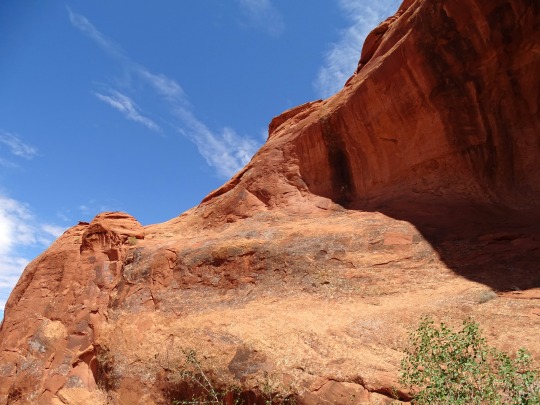



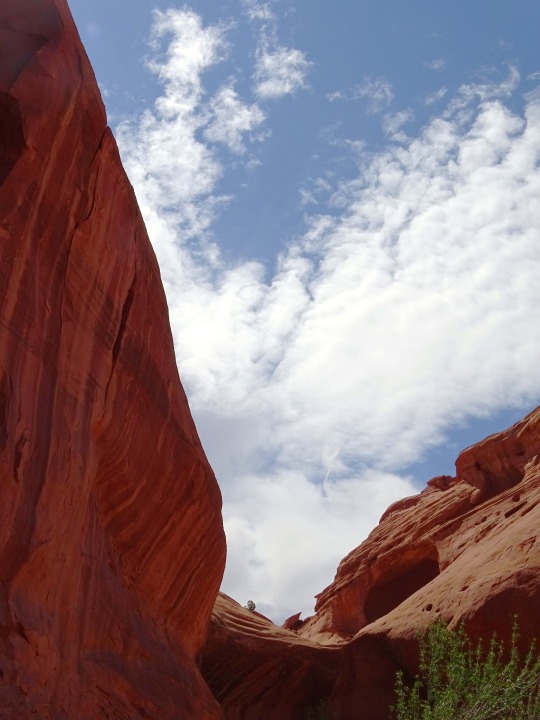




Monument Valley, AZ (No. 13)
Situated on the Navajo Nation are Canyon de Chelly National Monument, Monument Valley, Rainbow Bridge National Monument, the Shiprock monadnock, and the eastern portion of the Grand Canyon. Navajo Territory in New Mexico is popularly referred as the "Checkerboard" area because it is interrupted by Navajo and non-Native fee ownership of numerous plots of land. In this area, Navajo lands are intermingled with fee lands, owned by both Navajo and non-Navajo, and federal and state lands under various jurisdictions. Three large non-contiguous sections located in New Mexico are also under Navajo jurisdiction: these are the Ramah Navajo Indian Reservation, the Alamo Navajo Indian Reservation, and the Tohajiilee Indian Reservation near Albuquerque.
Source: Wikipedia
#Navajo County#Navajo Nation#Southwestern USA#Colorado Plateau#Monument Valley#Monument Valley Navajo Tribal Park#desert#flora#nature#blue sky#clouds#grass#travel#original photography#vacation#tourist attraction#landmark#landscape#countryside#USA#Arizona#summer 2022#Ear of the Wind#I really love the first pic
57 notes
·
View notes
Text

Navajo Bridge, U.S. 89A, Marble Canyon, Arizona. Photo by Brandon Griggs.
#rvlife#camping#rv living#adventure#traveling#rvadventures#travel#campfire#rvliving#travel photography#vanliving#van living#van life#arizona
10 notes
·
View notes
